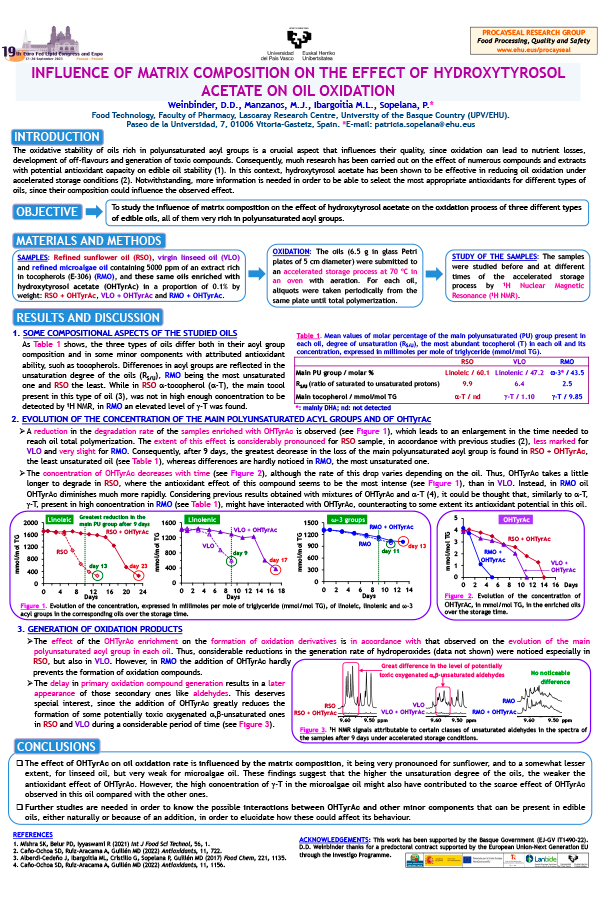Much research has been carried out on the effect of numerous compounds with potential antioxidant capacity on edible oil stability. Notwithstanding, more information is needed in order to be able to select the most appropriate antioxidants for different types of oils, since their composition could influence the observed effect. In an attempt to advance in this knowledge, hydroxytyrosol acetate (OHTyrAc), a compound with proven antioxidant ability (1), was added in a 0.1% proportion in weight to three edible oils, all of them very rich in polyunsaturated acyl groups: refined sunflower, virgin linseed and refined microalgae, in increasing order of unsaturation degree. These were submitted to an accelerated storage process at 70 ºC in an oven until the total polymerization of the oils. 1H Nuclear Magnetic Resonance was used to follow the evolution both of the main polyunsaturated groups present in the oils and of the OHTyrAc added, as well as the generation of some oxidation derivatives. The results showed a reduction in the degradation rate of the OHTyrAc-enriched samples, but to a different extent depending on the oil. Thus, after 9 days, the greatest decrease in the loss of the main polyunsaturated acyl groups was found in sunflower oil, together with a considerable delay in the generation of oxidation products, including some potentially toxic aldehydes. This effect was somewhat less pronounced in the linseed oil and only very slight in the microalgae one. These findings suggest that the higher the unsaturation degree of the oils, the weaker the antoxidant effect of OHTyrAc. However, it is worth noticing that the microalgae oil contained a high concentration of -tocopherol, which considering previous results obtained with mixtures of OHTyrAc and -tocopherol (2), might also have influenced the observed effect, counteracting to some extent the antioxidant potential of OHTyrAc in this oil.
References
1. Caño-Ochoa SD, Ruiz-Aracama A, Guillén MD. Antioxidants 2022, 11, 722. 2. Caño-Ochoa SD, Ruiz-Aracama A, Guillén MD. Antioxidants 2022, 11, 1156.
Acknowledgements
This work has been supported by the Basque Government (EJ-GV IT1490-22). D.D. Weinbinder thanks for a predoctoral contract supported by the European Union-Next Generation EU through the Investigo Programme.
